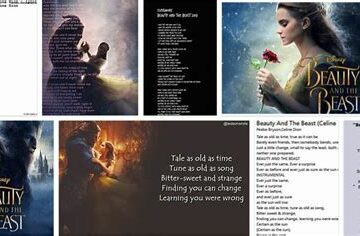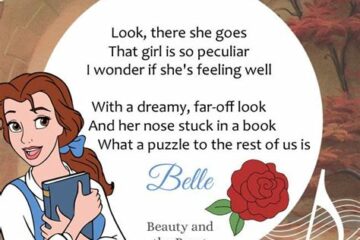
An Analysis Of Villainy In Beauty And The Beast
Understanding Villainy: Key Traits of the Beast’s Antagonists
In An Analysis of the representations of villainy in Beauty and the Beast, it is crucial to identify the key traits that characterize the primary antagonists, which notably include Gaston and the Beast himself at various points in the narrative. Understanding these traits provides a deeper insight into the complexities of their villainous behaviors and motivations.
One prominent trait of villainous characters in the story is their single-minded ambition. Gaston embodies this through his relentless pursuit of Belle, believing her to be a trophy that will elevate his social status and fulfill his selfish desires. His actions are driven by a need for validation and dominance, often resorting to manipulation and intimidation to achieve his goals.
Another significant trait is the lack of empathy exhibited by the antagonists. Both Gaston and the Beast, before his transformation, display a profound disregard for the feelings and well-being of others. The Beast, particularly in the earlier parts of the story, employs fear and aggression to maintain control over his castle and its inhabitants, showcasing a visceral reaction to his cursed existence, which further estranges him from compassion.
Moreover, the theme of entitlement is prevalent, especially in Gaston’s character. His expectations of admiration and obedience stem from a deeply ingrained belief that his strength and charisma make him superior to others. This sense of entitlement drives much of the conflict in the story, as it leads to confrontations with Belle and ultimately with the Beast.
The transformation arc for both villainous characters is a notable aspect of their portrayal. While Gaston’s villainy remains constant throughout, revealing the depth of his malicious traits, the Beast’s journey illustrates the possibility of redemption. This contrast raises critical questions about the nature of villainy and whether it is an inherent trait or one shaped by circumstances and choices.
Recognizing these key traits of the Beast’s antagonists is essential for a comprehensive understanding of how villainy is analyzed in Beauty and the Beast. Through a careful exploration of ambition, empathy (or lack thereof), entitlement, and transformational potential, we delve into the layers of villainous characterizations that add depth to the narrative.
An Analysis of Gaston’s Motivations And Actions
Gaston, the primary antagonist in Beauty and the Beast, serves as a complex illustration of villainy shaped by insecurity and societal pressures. In examining his character, it becomes evident that his motivations stem from a profound desire for validation and acceptance, which he seeks through superficial means.
An analysis of Gaston’s actions reveals his reliance on physical strength and social status to assert dominance over his surroundings. He epitomizes toxic masculinity, boldly proclaiming his prowess while seeking to eliminate any threat to his image, particularly that posed by the Beast. His obsession with Belle further underscores his motivations; he views her not as an equal partner but as a trophy that validates his masculinity.
Additionally, Gaston uses manipulation to influence those around him, leveraging their fears and desires to maintain power. Instead of fostering genuine connections, he resorts to deceit and intimidation, as seen in his attempts to rally the townsfolk against the Beast. Ultimately, Gaston’s actions reflect a deep-seated fear of inadequacy and rejection, driving him into a dark path of villainy that contrasts sharply with the themes of love and redemption explored in the narrative.
In conclusion, Gaston’s motivations are steeped in societal expectations and personal insecurities, making him a quintessential antagonist whose choices propel the central conflict within Beauty and the Beast. Through this lens, we gain essential insights into the nature of villainy in the story, setting the stage for a broader understanding of its implications on character development and thematic depth.
The Role of Societal Expectations in Shaping Villainy
In any story, societal expectations play a pivotal role in shaping characters, particularly villains. In An Analysis of the interactions between the Beast, Gaston, and Belle, we can see how societal norms and values contribute to the moral decline of certain characters while also offering redemption pathways for others. The pressure to conform to ideals of masculinity and heroism shapes Gaston into a villain who is not only oppressive but also dangerously influential.
Gaston epitomizes the quintessential “alpha male” archetype, glorified within his community for his physical prowess and bold demeanor. The expectations placed on him push him to exhibit aggressive behaviors to assert dominance, which ultimately leads him to see Belle not as an individual but as a trophy to possess. This obsession with control and domination stems from a societal framework that equates masculinity with power and conquest, illustrating how these external pressures can distort personal values and propagate villainy.
Conversely, the Beast’s villainy is initially shaped by societal rejection and dehumanization. His tragic transformation into a monster is less about his inner flaws and more about how society’s superficial judgment overlooks the potential for compassion and love. As the narrative unfolds, his journey towards redemption highlights the potential for change when one breaks free from societal expectations and redefines their identity in a more humane, allowing space for personal growth.
This juxtaposition of characters underscores the complexities of villainy in An Analysis of Beauty and the Beast. While Gaston’s villainy is sharpened by societal endorsement of toxic masculinity, the Beast’s evolution highlights the possibility of breaking free from such confines, ultimately leading to a more profound understanding of true inner strength. Therefore, societal expectations not only catalyze villainy but also challenge characters to transcend their fates, illustrating a dual narrative of conflict and redemption.
Contrasting Villainy and Redemption in Beauty and the Beast
In the narrative of An Analysis of villainy in Beauty and the Beast, the dual themes of villainy and redemption play crucial roles in shaping the story’s moral fabric. Villains often embody traits that lead to their downfalls, while redemptive figures demonstrate the potential for transformation and growth.
The Beast serves as a compelling example of this contrast. Initially, he represents the archetypal villain due to his monstrous exterior and violent temper. However, as the story unfolds, his character reveals layers of complexity and vulnerability, particularly through his interactions with Belle. The Beast’s journey from villainy to redemption highlights the central message that true beauty lies within, emphasizing the importance of compassion and understanding.
On the other hand, Gaston exemplifies a different side of villainy. His refusal to change and his inflated sense of self-importance prevent any potential for redemption. Unlike the Beast, Gaston is consumed by his arrogance and desire for power, making him a static character within the narrative. This contrast showcases the theme that redemption is not just a transformative experience but also a choice rooted in humility and self-awareness.
By juxtaposing the Beast’s eventual redemption against Gaston’s persistent villainy, Beauty and the Beast invites audiences to reflect on the nature of good and evil. Characters are not merely defined by their actions; their potential for change also shapes their narrative arc.
The interplay between An Analysis of villainy and redemption in Beauty and the Beast serves to reinforce a timeless lesson: even the most flawed individuals have the capacity for growth, while those who fail to confront their shortcomings remain trapped in their villainous roles.
How Villainy Influences Character Development and Plot
In analyzing the complex dynamics of villainy in Beauty and the Beast, it becomes evident that the presence of antagonists significantly influences both character development and the overarching plot. The Beast’s transformation and growth are largely propelled by the actions and motivations of characters like Gaston and the enchanted objects.
The conflict introduced by these villains catalyzes essential changes within the protagonist and supporting characters. For instance, the Beast starts as a reclusive figure driven by anger and resentment, largely shaped by his past traumas and the curse placed upon him. The threat posed by Gaston pushes him to confront his own nature and ultimately seek redemption through love and self-acceptance.
Moreover, the villainy displayed by Gaston not only drives the narrative forward but also challenges Belle’s values and desires. Her interactions with both the Beast and Gaston highlight her strength and independence, forcing her to make choices that resonate with her true self. This deviation from societal expectations further emphasizes Belle’s role as a strong female lead, illustrating how villainy can serve to elevate her character arc.
As the plot progresses, the stark contrast between the Beast’s internal struggle and Gaston’s external aggression underscores the core themes of love, acceptance, and change. Ultimately, the tension created by villainous characters facilitates critical growth, paving the way for a transformative resolution. Thus, an analysis of how villainy influences character development proves vital in understanding the intricate layers of storytelling in Beauty and the Beast. The interplay of antagonism not only shapes the protagonists’ journeys but also enriches the narrative, revealing deeper moral and emotional facets of the narrative.
Top 10 Disney Characters You Didn’t Know About
December 30, 2024A Deep Dive Into Disney Princesses And Their Stories
December 29, 2024The Meaning Behind Beauty And Beast Lyrics
December 29, 2024Why Beauty And The Beast Is A Timeless Disney Classic
December 29, 2024The Role Of Disney Princesses In Modern Culture
December 29, 2024Exploring The Themes In Beauty And The Beast Lyrics
December 28, 2024
Leave a reply Cancel reply
Recommended
-
Beauty and the Beast – Our Guest Lyrics
November 16, 2021 -
Understanding The Ending: What It Means In Beauty And The Beast
December 6, 2024 -
The Most Iconic Disney Characters And Their Catchphrases
December 26, 2024








